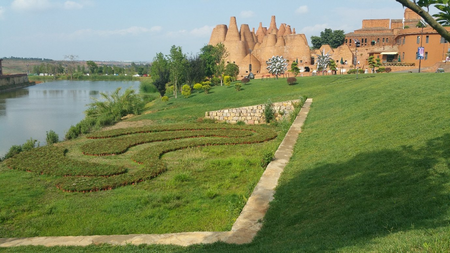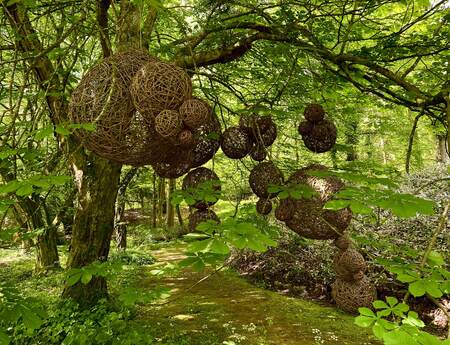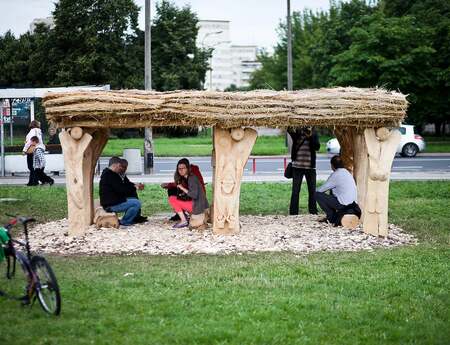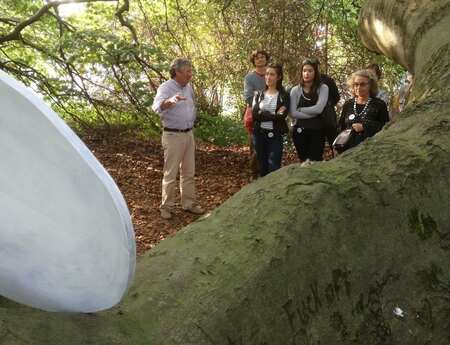Luo Xu - Aboriginal Nest
2019 Creative MILE is a cultural event sponsored by the Mile government of Yunnan province and Yunnan Arts University in China. It is an international design workshop, that took place in the town of Dongfengyun in the county of Mile in Yunnan province. The event was a collaboration between Art and Design College of Yunnan Arts University, Yunnan Urban and Rural Construction Investment co. Ltd and Honghe Xingwang Agricultural Development co. Ltd. Olga Young, the author of this article, participated in this workshop.
During the event, the teachers and students from Yunnan Arts University guided the participants through a cultural and historical study of Mile and the surrounding areas. In attendance were established artists, both local and international.
This article is based on my attendance at the 2019 Creative MILE workshop. I focus, in particular, on the work of artist, Luo Xu (罗旭), who was responsible for the creation of the Aboriginal Nest, which is a space for art and thought. The Aboriginal Nest covers more than two thousand square metres. It is set with sculptures of disparate styles. My encounter with his work has since become an inspiration for my thoughts and art.
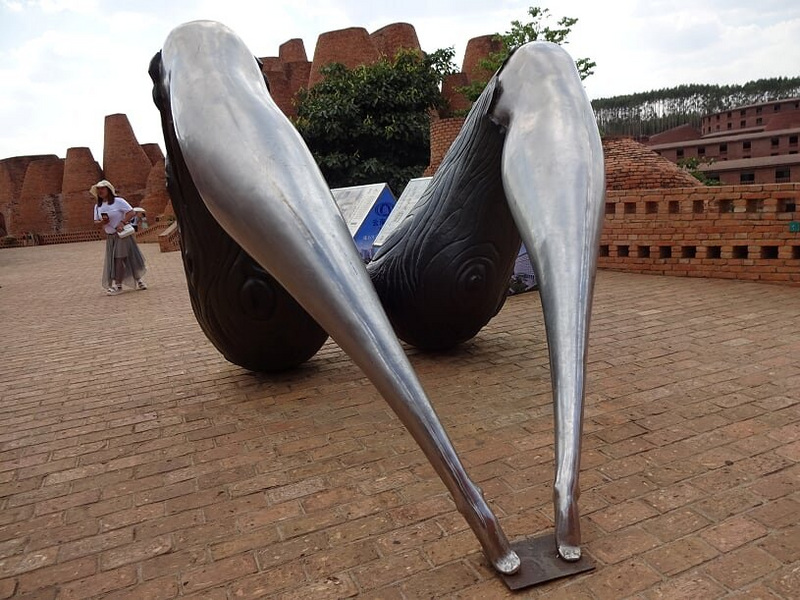
Luo Xu was born in a village in Yunnan province. The province is home to a vast array of disparate ethnic groups, over forty of them. Like many people born in villages, he is undocumented and so the year of his birth cannot be definitively stated. Although he has always wanted to be an artist, he could not for cultural and political reasons. Instead, he worked in a porcelain factory, on the land, in construction, and even breeding rabbits. Nevertheless, he eventually caught the attention of the sculptor Qian Shaowu who invited him to attend the Central Academy of Art in Beijing. He studied the human form there. His breakthrough was his first exhibition in 1990. Since then, he has had exhibitions annually and his work shown around the world. He has since returned to Yunnan where he stumbled onto the plot of land where his great work, the Aboriginal Nest; is now sited.
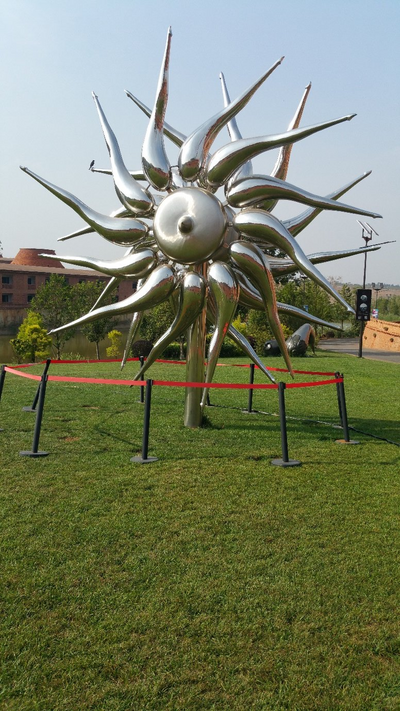
The theme of Luo Xu’s work was initially on the human leg, switching to the leaf in 2005. He became one of the major contemporary Chinese artists in 2006, after his participation in French and North American art fairs.
Surrounded by great works that were at one with the surroundings, my senses were forced to engage with the works of Luo Xu. As an artist, I concentrate on the ‘how’ - how he created his works, how he produced it, how he chose colours and materials etc. My advantage over European scholars is that I was born in Asia and being familiar with Daoism, Buddhism and Confucianism. In particular, my view of Asian art is dissimilar from the prevalent Western perspective rooted in the Anglo-American tradition. While my thinking is perhaps naive and ignorant, I share my understanding of Luo Xu’s art, in particular as a potential starting point for future thought and research, rather than something definitive.
A common Western view of his art is that it is all about the vagina, the womb and the breast, that is, the objectification of the female body parts. This leads to the idea that his work is based on either a feministic, or a paternalistic, even patriarchal, viewpoint. Such a view of Luo Xu’s art may be formed from a Western perspective but that would be a kind of cultural imperialism that presume that all people think from a common conceptual model instead of allowing for infinite emerging possibilities.
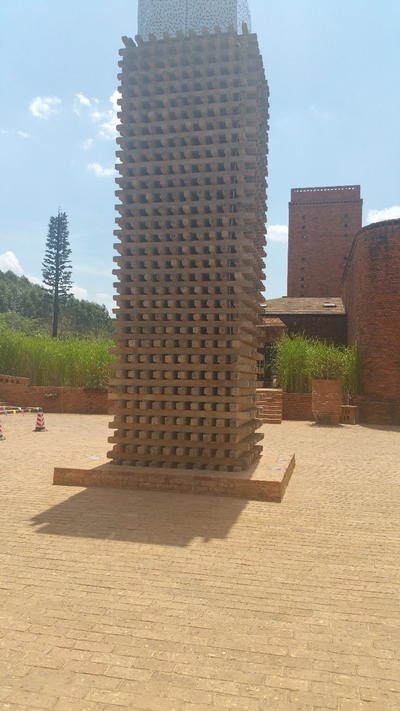
Daoism is a transcendental understanding of the world. When observing natural forms and events from a Daoist perspective, one allows an understanding with a spiritual or inner world from which the universe flows forth. Beauty and ugliness lose their antithetic qualities. They lose their meaning as extremes of judgment. They become expressions of becoming; one is an aspect of the becoming of the other. Artistic activity becomes a process of striving for an understanding with the inner or essential world of nature. The freedom of the artist is the right to individual choices of theme and subject for his art. These freedoms are only freedoms to express the same. The freedom of the artist is not to say something different. The freedom of the artist is to use an individual ‘language’ or ‘dialect’ in order to express the inner – in order to express a universal sameness.
Art differs from craft by naturalism, simplicity, spiritual and mystery. Art seeks to say what cannot be said. The saying would hide what is to be said by covering it with the conceptuality of terms. Art seeks to say the unsayable while craft speaks the already said. Spiritual meaning is indicated through symbolic context, showing through a system of associative and semantic images. To differentiate any art from craft, art becomes a metaphor with no referent. Art invokes the feeling of what is unsaid. Art is the unfinished thought that gives to the viewer the freedom to read and understand deep meaning beyond the work. The goal of art is to become nothing by pointing to nothing.
Naturism and simplicity are the main principles of Dao which refuse the skills of traditional art schools so that everything the artist creates comes from meditation. Art is an expression of an ecstatic revelation, not giving a word, but a loss of words.
Mystery or hidden meaning is in emptiness, empty space, silence in music. What is said speaks in the silence. What is shown reveals itself in the emptiness. This system creates the special identity of Chinese art in contrast to the symbolism of Western art.
Turning to look at a famous sculpture of Luo Xu, Running Legs, what first catches one’s eye is the number of legs and how much this sign reminds one of the sign of the vagina, and of the symbol of the Greek Apollo.
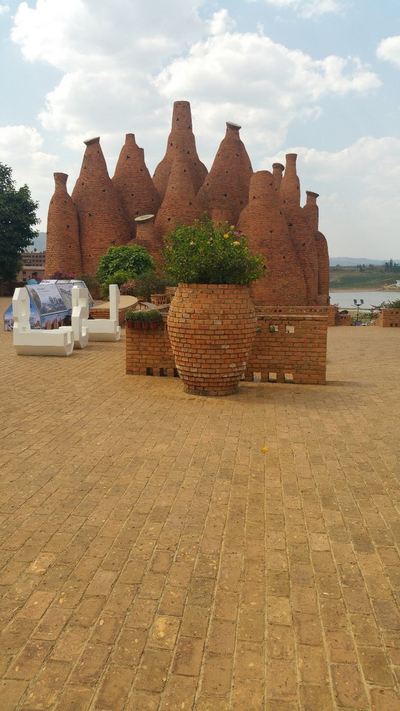
The sculpture becomes much more than just legs and vagina, it becomes a symbol of the four elements of life. The strong spiritual and religious connections brings one towards an understanding of the inner world of being. One is brought towards being to become one with being. One ceases to be by becoming lost in being.
In the Chinese language, there is no expression that equates with ‘I am’. There is only being or not. Individualism is not important because there is no name for it. That which the word cannot say, the mind cannot think. That which cannot be formed into an idol, cannot be held up as a reification of the divine. From this point of view, the vagina gives being; it is gate from one world to another and so has special powers and spiritualism. As Luo Xu said, “even Buddha was born from vagina”.
When Luo Xu concentrates on sacred parts of human body, he shows the beauty of the hidden and unspoken in his artistic terms. He chooses silver colours for his sculpture to imply the moon sign of femininity. He uses clay and bricks to create his architectural complex to show that, ‘we shape clay into pot, but it is emptiness inside that holds whatever we want’ (Daodejing,110).
The apparent objectification of parts of the human body and so the objectification of those humans that have that structure becomes meaningless. The restriction of the female to the imminent is denied in a world where the ego has been destroyed as it becomes one with being, taking with it the superficiality of physical difference. Male and female can no longer hold weight when the essential nature of both is one.
When one experiences Aboriginal Nest, one wanders through the landscape and art. The architectural forms created by Luo Xu induces the feeling to transcend. One’s will is drawn to meditate within this environment. One allows the creations to continually create as ones wanders among them. One’s spirit is drawn strongly to a connection with nature and the inner world of unspoken.
Some people associate the buildings with the womb, but I feel that their pull is deeper than the symbol of the womb. They have a connection to religious temples of Daoism or stupa of Buddhism. Using the apparent simplistic metaphor of womb or breast to draw one past the naive referent, past the referent to religious structures towards a becoming. It is a mantra drawing one into a journey of transcending.
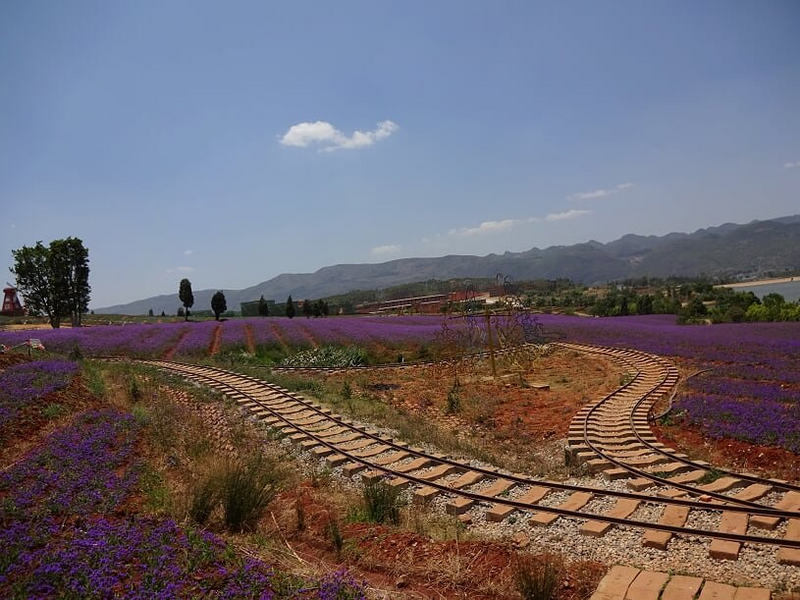
Coming to the lavender field one finds a railway line. On each sleeper, “I love you” is written in different languages. A huge purple field creates feeling falling in love, falling into purity and the unspoken. Love is not the desire to have or possess an object. Instead, love is the desire for freedom for the other. Since one is essentially being and the other is essentially being, one’s being in one's start of becoming becomes a unit with the start of the becoming of the other. That is, the other is not possessed. The other is not taken as an object. Instead, the other is taken as an essential being. Love is not a love of the thing. Love is the wish for mutual freedom. The ego and the other become one. Both are destroyed in love.
A few hectares of landscape play another role in the totality of the complex to achieve the full connection of art with nature. It draws in the human and his world creation to become part of it so that the human loses themselves as human. Being envelopes the human as ego and so the ego is lost into non-being and being becomes all.
The site and artwork created by Luo Xu amazes me with the amount of work done by one person. His thoughts and ability to create such a complex, deep and spiritual world of love, to create such a purity and spirituality, strikes awe into any that allows themselves to be taken, by the art, away from the mundane, into a sensibility that transcends immanence. One travels and journeys with a gentle guide beyond one’s self to come back to one’s self.
Author: Olga Young
The author is artist Olga Young, who has been active for twenty years, chiefly in the UK and France. For much of that time, she concentrated on painting and have had exhibitions around the world. She is currently studying Fine Art at Sheffield Hallam University where she has become increasingly interested in sculpture. She produces her pieces using a wide variety of materials. The most important aspect for her is the doing, the act of creation, at the end of which, the piece is what remains. In this article, she shares her experience of Luo Xu’s work.
Cover picture: View of Aboriginal Nest, photo: Olga Young
